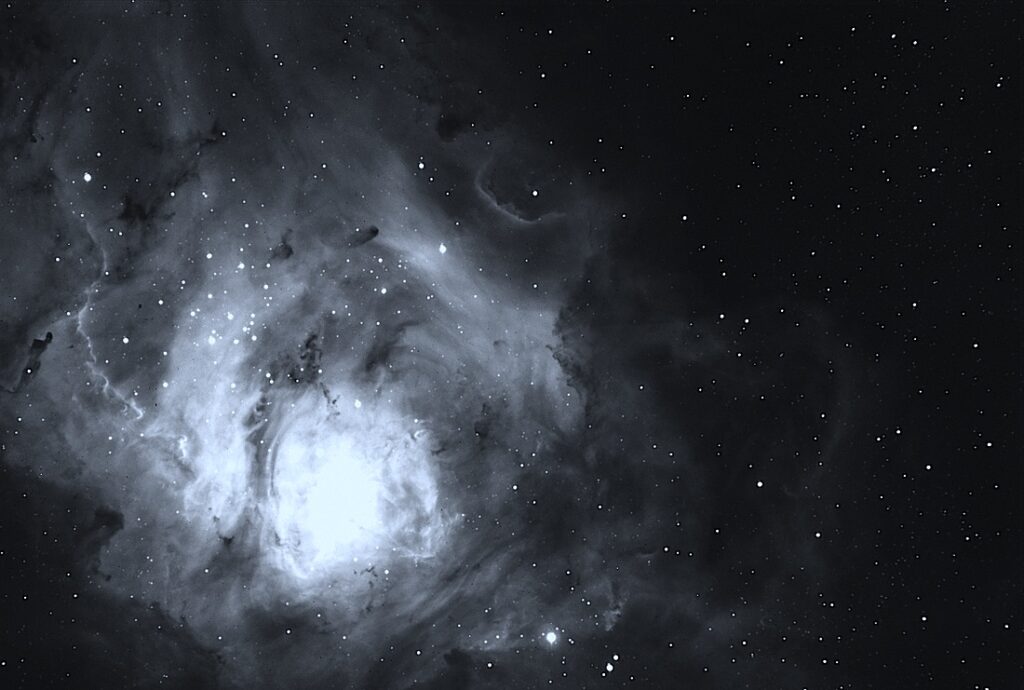A magnificent "emission nebula" in Sagittarius. Energetic ultraviolet photons emitted by the hot young stars in the middle of the nebula (the bright, white region) are absorbed by electrons in the hydrogen gas cloud, boosting them from their "ground state" to a higher orbit. This unstable condition cannot be maintained for long, and the electrons quickly return to their ground state, emitting a photon of a discreet amount of energy as they do (as predicted by the Danish physicist Neils Bohr).
The absorption and emission of countless photons by the cloud causes it to glow, in all directions, converting pinpoints of light (the interior stars) to a cloud of light.
The entire nebula is huge, spanning some 140 light years (850,000,000,000,000 miles). Its angular width in the sky is 90 arcminutes, or three times the width of a full Moon. However, only the core can be seen by the naked eye, under dark skies.
Among the many interesting details in this image you will see several examples of "Bok globules." These are small, black shapes that are condensing clouds of hydrogen that astronomers believe are in the process of becoming stars as the energy produced by gravitational contraction produces sufficient heat to ignite fusion reactions.
The Lagoon Nebula (M8) in Sagittarius
Date Taken:August 5, 2004
Location Taken: Conditions of Location:FWHM 2.48
Equipment Used:Takahashi TOA-130 5" apochromatic refractor telescope, SBIG ST-10XME CCD camera, Optec TCF-S focuser, H-alpha filter.
Processing Used:6x300 second guided images in H-alpha combined in Maxim and processed in Photoshop (curves and levels).
Distance from Location:5,200 light years
Constellation:Sagittarius
Other Link:
